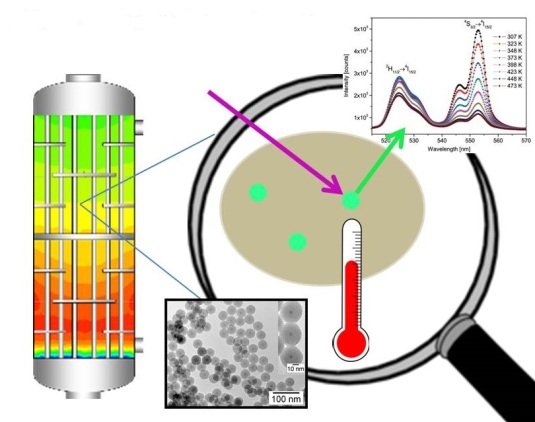Catalyst Particle-embedded Luminescent Nanoparticles for Temperature Sensing






Insight in the physical conditions during catalytic reactions is crucial in realizing a better understanding of catalytic processes. Parameters like temperature, pH and concentration of reactants are often measured as average values. Information on the inhomogeneous distribution, local variations in time and place, are hard to monitor in a chemical reactor loaded with catalyst particles. It is the aim of this project to develop luminescent nanoprobes to measure temperature with high spatial and temporal resolution during catalytic reactions. The probes will consist of luminescent quantum dots or lanthanide doped nanocrystals, which show characteristic, temperature dependent luminescence spectra in the relevant temperature range 300-1000 K. To stabilize the nanoprobes, a silica shell can be grown around the nanoparticles. The silica shell can also be used in to include additional functionalities, e.g. pH sensitive luminescent dye molecules or luminescent species which show selective quenching by specific reactants, to extend the applicability of these novel nanoprobes. The final goal is to realize sensitive nanoprobes to provide insight in the distribution of temperature and other reaction conditions in chemical reactors, and for this purpose the nanoprobes will be embedded in shaped catalyst particles, such as mm-sized extrudates and pellets.
Project leader: Prof. Andries Meijerink



















